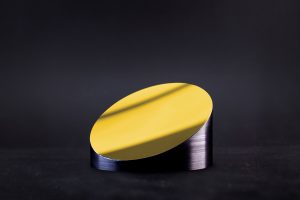Off-axis parabolic (OAP) mirrors have become essential components in modern optical engineering, offering clear advantages over traditional parabolic reflectors. By eliminating central obstruction and minimizing optical aberrations, OAP mirrors enhance system performance across a wide range of applications—from astronomy to laser material processing.
In this article, we compare OAP mirrors with conventional reflectors and showcase how their unique design leads to superior results in demanding optical systems.

Off-Axis Parabolic Mirror
The challenge: Wavefront distortion and thermal instability in long-path optical systems.
The solution: A 300 mm OAP mirror made from Zerodur with a dielectric coating and <1/3λ surface accuracy provided stable beam steering for a THz spectroscopy setup, enabling precise data collection over fluctuating temperatures.
The challenge: Central obstruction and stray light reduce image contrast in telescopic systems.
The solution: A 400 mm fused silica OAP mirror with a protected silver coating and a 30° off-axis angle minimized diffraction and enhanced deep-sky imaging. The result: clearer, higher-contrast astronomical observations.
The challenge: Energy loss and alignment errors in high-power laser beam delivery.
The solution: A gold-coated, 1-inch OAP mirror with a 45° off-axis angle was used to focus intense laser beams with minimal loss. Constructed from 6061 aluminum, it performed reliably in high-vibration industrial environments.
At Shanghai Optics, we specialize in manufacturing high-precision Off-Axis Parabolic Mirrors optimized for specific optical systems. Our solutions include:
Contact Shanghai Optics today! We’d be more than happy to discuss your projects and how to best bring them to fruition.